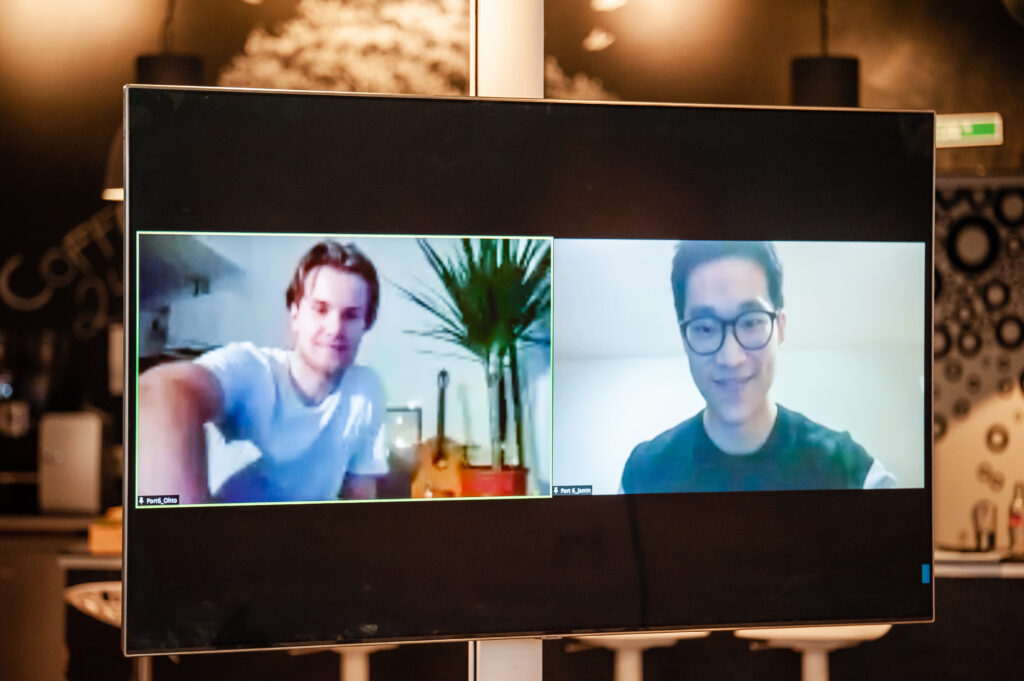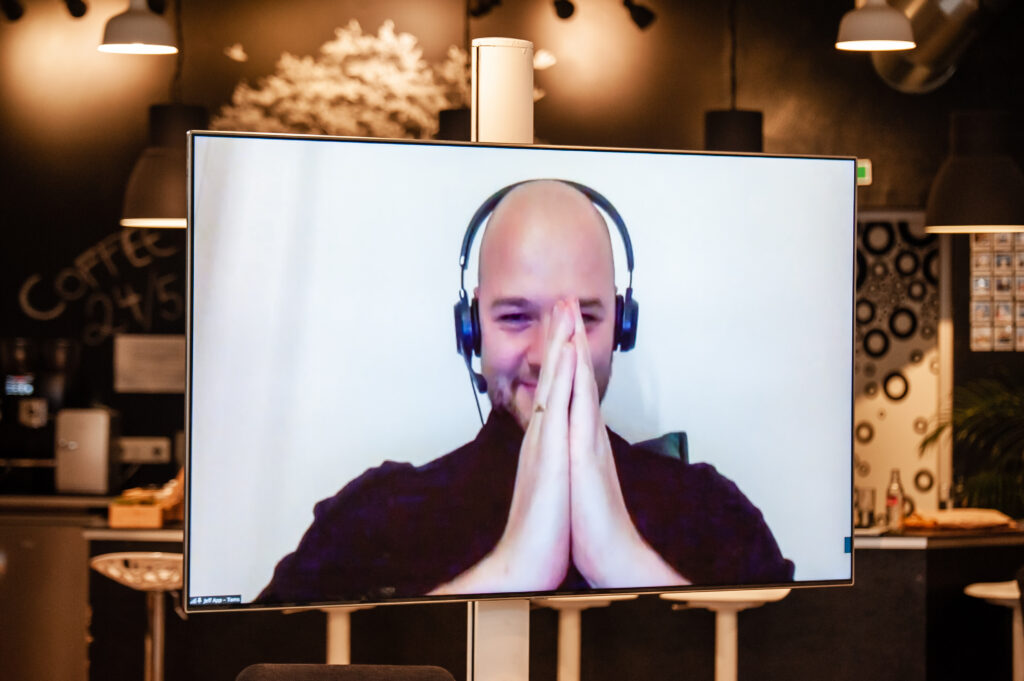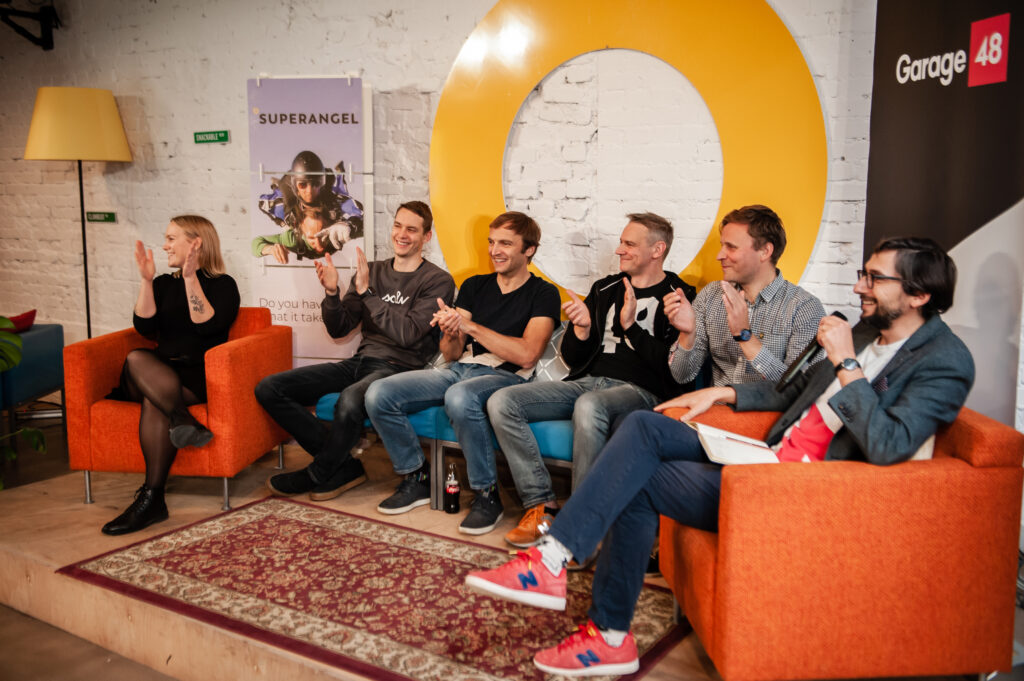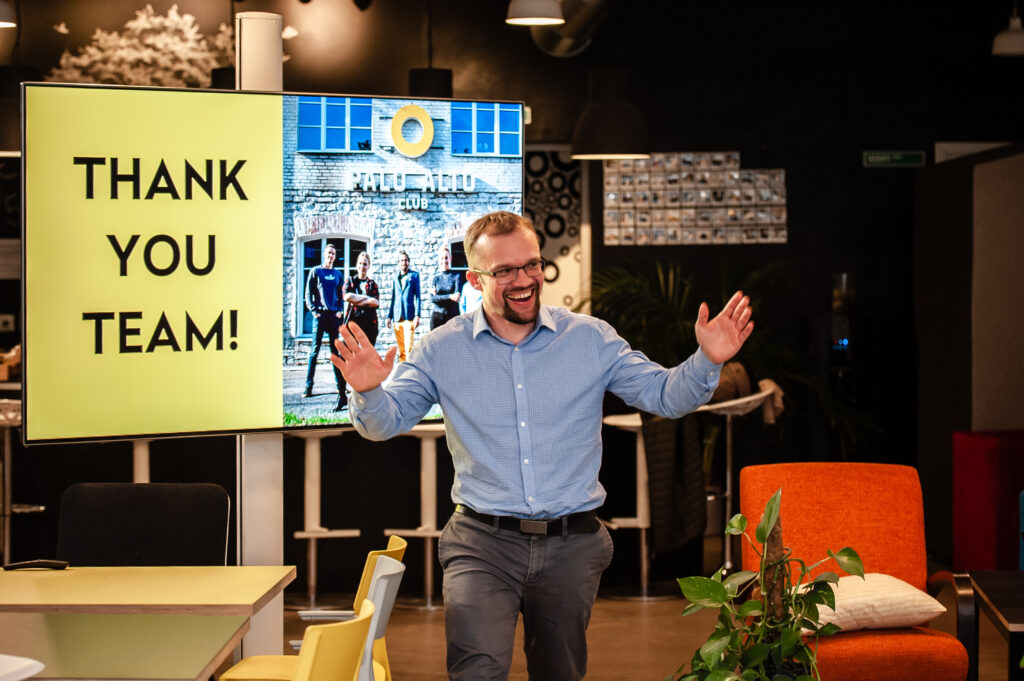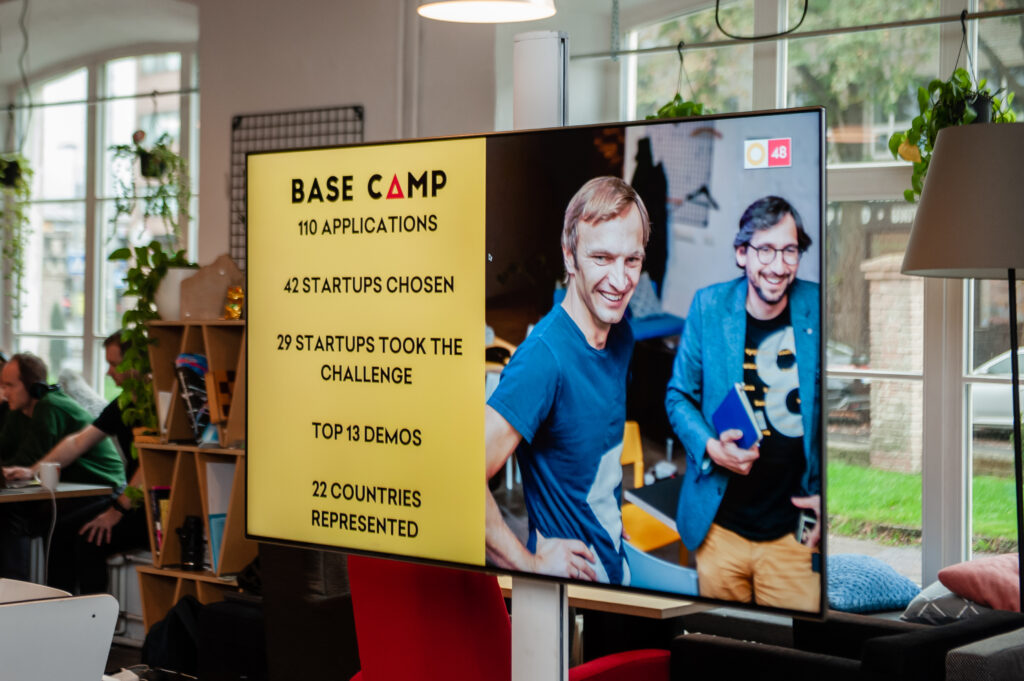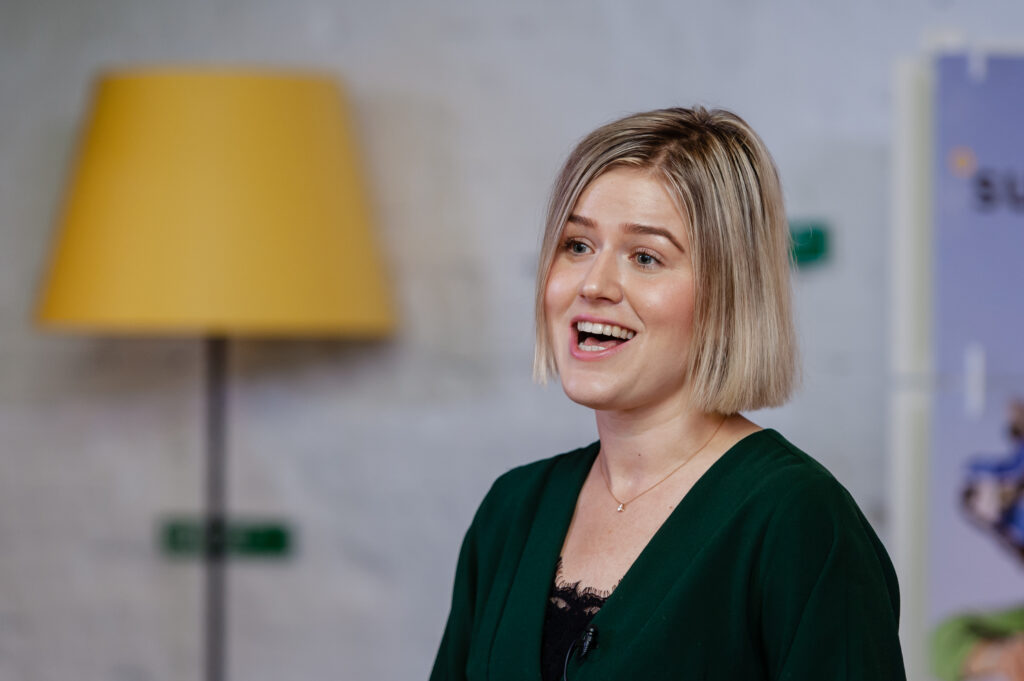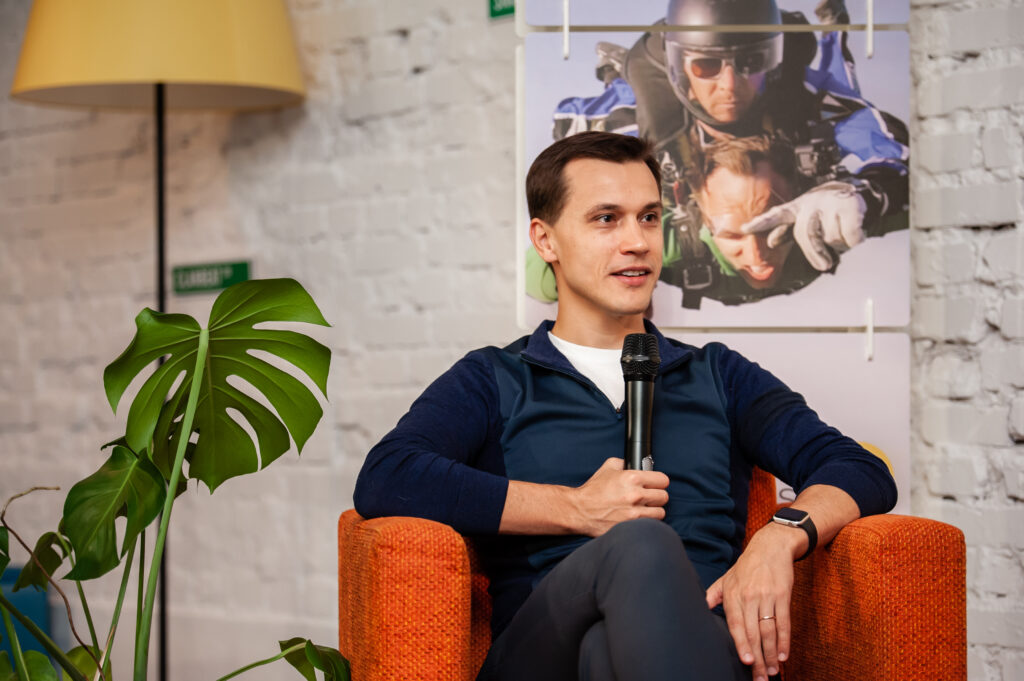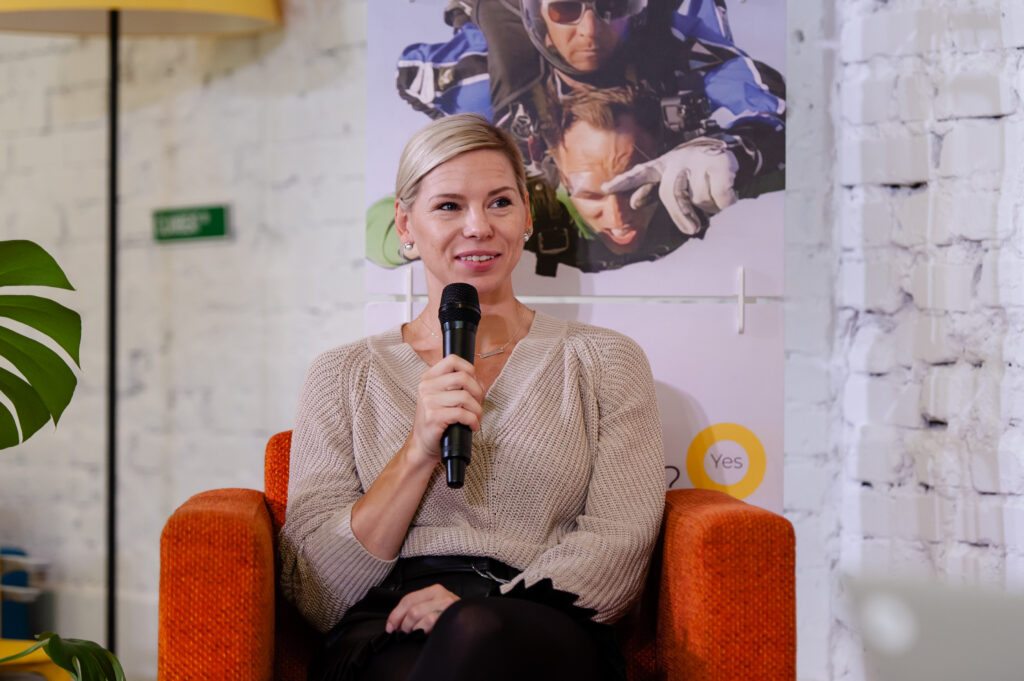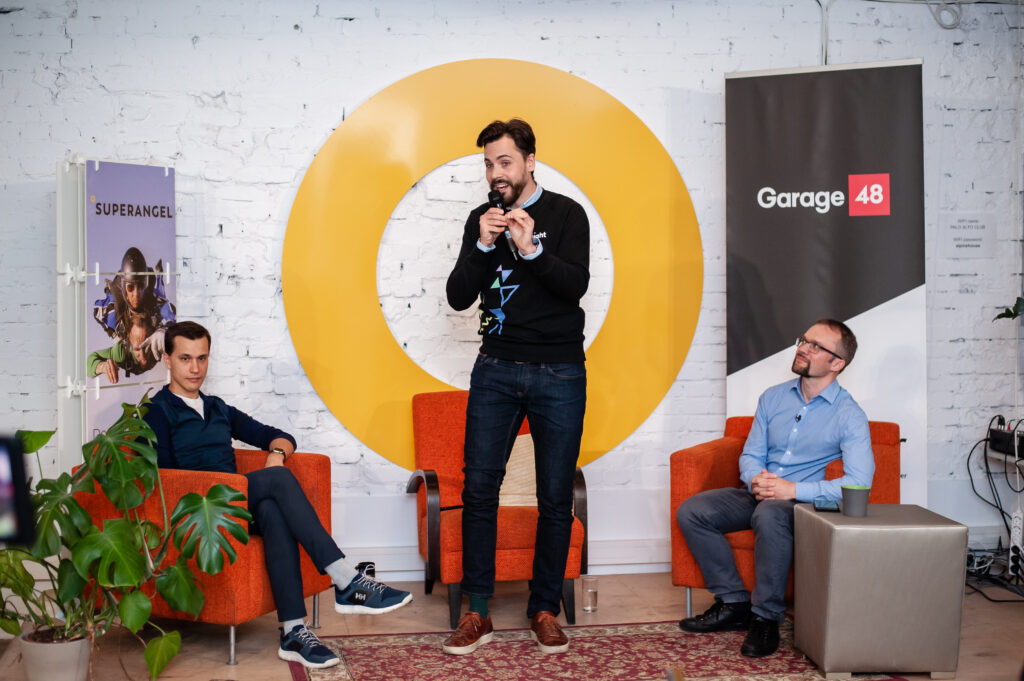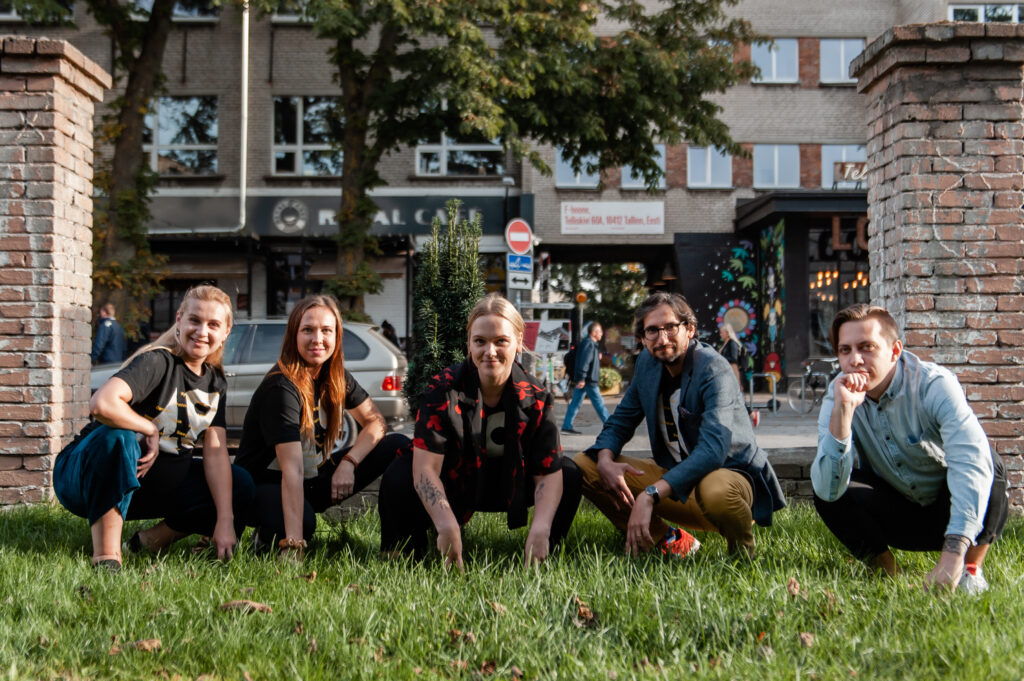How much money can your startup raise after investing 72h into Base Camp hackathon?
The anniversary Base Camp was an epic journey for early stage startups in many ways. Here’s a look at what 29 teams from 13 countries, 35 experts and 68+ hours of mentoring sessions can help startups accomplish.
Finished watching the aftermovie? Well then you’ve got a pretty clear idea of what’s the hype about!
During previous 4 Base Camps, our alumni has been able to raise around 16M€. This time is no different. Base Camp Autumn 2020 startups have raised around 2M€ within 2 months.
Be part of the Base Camp experience and join us for the next hackathon on 18-21st March 2021. Leave us your contact details and be the first to know when applications open!
In October, Jeff App won Base Camp 2020 global competition for early stage startups by impressing the jury with a strong capability to mobilise as a team and significantly advance the product in just 72 hours. Now raising a seed round, Superangel had a chat with the founder and CEO Toms Niparts on how Jeff App was born, how they plan to continue conquering South-East Asia and what is the most important lesson they have learned in building a fast growing startup.
In Summer 2019, two friends quit their well-established jobs and relocated back to Latvia to focus on building up Jeff – a loan broker for the unbanked. Started in January 2020 – probably the most unique time to launch the startup considering the global pandemic, they’ve successfully established traction in Vietnam with 150,000+ users and revenue growing at a rate of 70% MoM. Today, the app has been used close to 1M times.
Jeff’s success hasn’t gone unnoticed in the startup ecosystem. Prior to winning the Startup Day pitching contest, Jeff App won Seedstars Latvia and CEE, and last month they were also a runner-up in Arctic15. They’ve also been recognised by Forbes USA, Sifted, Singapore FinTech Festival and Slush as one of the top FinTechs to keep an eye on.
‘If you don’t have big audacious goals, it’s extremely hard to build a great company with big success.’ – Toms, the Ceo of jeff
Jeff App operates in a market with high growth potential. With a population of 570 million and a booming GDP expected to reach $4.7 trillion by 2025, the six largest countries in Southeast Asia represent one of the world’s largest and fastest-growing regions. More than 70% of the adult population, however, is either “underbanked” or “unbanked,” with limited access to financial services. At the same time, most banks find it difficult to meet the needs of the underbanked population because of the vast mismatch between traditional bank credit scoring models and the actual data the consumers have at their disposal.
To change that, Jeff has created a loan brokerage app that utilises alternative data to boost financial inclusion in South-East Asia. For banks, Jeff becomes a lead generator that can bring new business and services a much bigger customer base. They provide a large number of new, valuable insights derived from digital footprint and various alternative and behavioural data sources.
Founding the company in Latvia, operating in Vietnam. How does it work?
The global economy is changing and building a company remotely is easier than ever before. Nevertheless, the founders quickly realised that local knowledge is everything – the culture, behavior and customer needs are different. Thus, whilst the technical team is located in Latvia, the customer and partner facing team operates in Vietnam.
It’s clear that the founding team is not afraid to go big – entering the South-East Asian market is incredibly exciting. Achieving a considerable user base would probably take years in smaller European markets but in Vietnam the market potential is much bigger. At the same time, Toms wonders if Baltic startups are dreaming big enough as building a company only in the Baltics diminishes the market size significantly. He follows, ‘If you don’t have big audacious goals, it’s extremely hard to build a great company with big success.’
The most important lesson: People create the business. Make sure they are in for the right reasons
Today, there’re 8 full time employees behind Jeff App in Latvia and Vietnam covering a range of expertise, including digital marketing, design, business development, data analysis and software development. Toms admits that T-shaped skillset and thinking is a very important aspect when putting an early-stage team together. Additionally, they’re looking for strong A players: people that have very strong domain understanding and deep experience in their area. In that way they’re considerably decreasing onboarding time, adding value sooner and maintaining internal communication and simplifying the know-how exchange.
The hiring process has also been the greatest learning point for Jeff’s team. ‘We learnt this the hard way. At an early stage, if someone wants to join your team only for a salary increase, run for the hills.’ In Toms opinion, it’s very important to understand right away what the person is looking for in his/her next challenge and how it aligns with what you can actually offer. ‘Be brutally honest about this – otherwise you’ll waste your key resource: time.’
Base Camp gave Jeff App the opportunity to advance the product and take a step back from day-to-day hustle
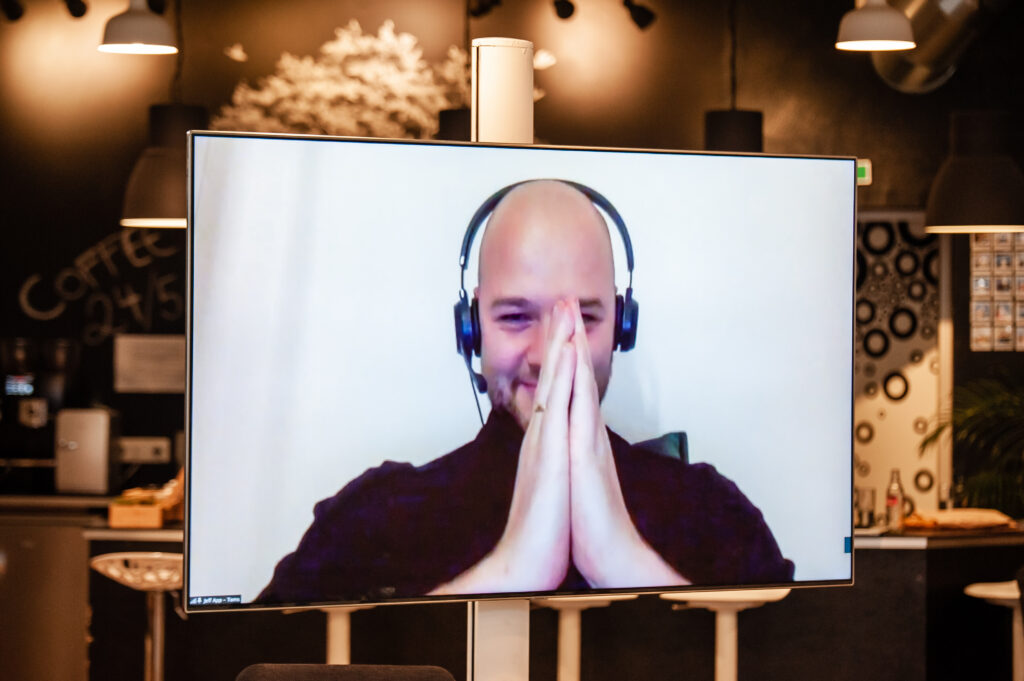
Out of 120 applicants, Jeff was one of the 29 teams who was invited to attend Base Camp Autumn 2020, a biannual 72h product focussed hackathon organised by Superangel and Garage48. Toms thought Base Camp to be an excellent opportunity to isolate from the noise and be laser focused on one idea: ‘An early-stage startup always has a great deal of ideas and hypotheses to test. At the same time, it’s easy to float away and shift focus to some urgent things to fix.’
The team decided to work on an idea that they had discussed internally for a while- lender portal. The lender portal is a free-to-use web application for Jeff’s partner banks and lending partners to conveniently access incoming client flow. Considering that APIs are non-existent and exchanging data in South East Asia is currently inefficient, the system not only puts a new, better infrastructure in place, but also helps increase the number of prospects for lenders by 3-5x.
Base Camp also gave Jeff the chance to discuss their business with entrepreneurs who’ve been there before. ‘It can get hard to look at the big picture with a clear perspective.’ reflects Toms. ‘Getting clarity and understanding is hugely important to reset the course again. From tips on UX and UI to high level business talks, sessions with Base Camp mentors were valuable.’
But why should any early-stage startup attend Base Camp?
„Number one reason is focus. Then comes competitiveness and contacts, and besides: Why not? What do you have to lose?”
Base Camp Spring 2021 takes place again in March. Are you an early stage startup looking to work with the best experts and investors, and gain deep knowledge to advance your business and product? Follow our social media and be the first one to be notified when the registration happens.
Check out our posts also on Medium.
What is possible for an early-stage startup in 72 hours? Is it possible to get 20 contracts signed for a new B2B product, build and launch a new B2C product with first 50 users in 24h, shorten sales cycle 3-5 times, launch a giveaway game reaching 50k people, and extend virtual reality with music? Base Camp participants showed it is.
Superangel in collaboration with Garage48 has finished the 72 hours Base Camp hackathon, this time bigger than ever. For the 5th time, we brought together early-stage startups from all around the world and supported them to take their products (and businesses) to the next level in 72 hours. With 120 applicants, 35 experts, 68+ hours of mentoring sessions, 22 countries, and 13 finalists, the anniversary Base Camp proved to be a great success. Big congratulations to the winner Jeff App, and runner-ups Edumus, Port 6 and Relancer!
‘taking part in Base Camp was a truly empowering experience accelerating the development of our product and opening a lot of doors for future growth.‘ – edumus
Base Camp is an exclusive and competitive 72-hour virtual product-focused hackathon for early-stage startups. Startups set their own goals for over the weekend product & customer validation sprint. Supported by valuable insights and shortcuts from top-class mentors, startups can take their product to the next level and prove to investors that they can get the job done in 3 days. During the previous four Base Camps, we’ve boosted over 40 startups all over the world, 21 of which have raised over 16M€ since last year.
The 29 selected teams for the Base Camp Autumn 2020 showed strong competence, dedication, and quality, making it a tough competition for all startups. It’s not easy to mobilise your team for 3 days in a row but despite that, the startups came to Base Camp with great ambitions and goals, and maintained focus until the end of the hackathon. In addition to improving the product itself (with some teams launching completely new products and features), teams were advised to contact potential users and customers for live feedback and push their business as much as they can using the knowledge from our mentors and expert sessions. The outcome?
In 72 hours early-stage startups were able to accomplish the impossible:
- Signed 20 contracts for a B2B product
- Built and launched a new B2C product, getting 50 first users in 24h
- Launched and reached 50k people with a Kia Stinger giveaway game
- Got 5 potential B2B clients to give feedback according to rules of Mom Test
- Signed 5 LOIs in 24 hours
- Shortened sales cycle by 3-5 times
- Extended virtual reality by creating music using your hand movement
- Revamped the cold email/calling strategy
And much more! The hackathon was also a great opportunity for team building – many startups realised they’ve got skills in the team they never knew of.
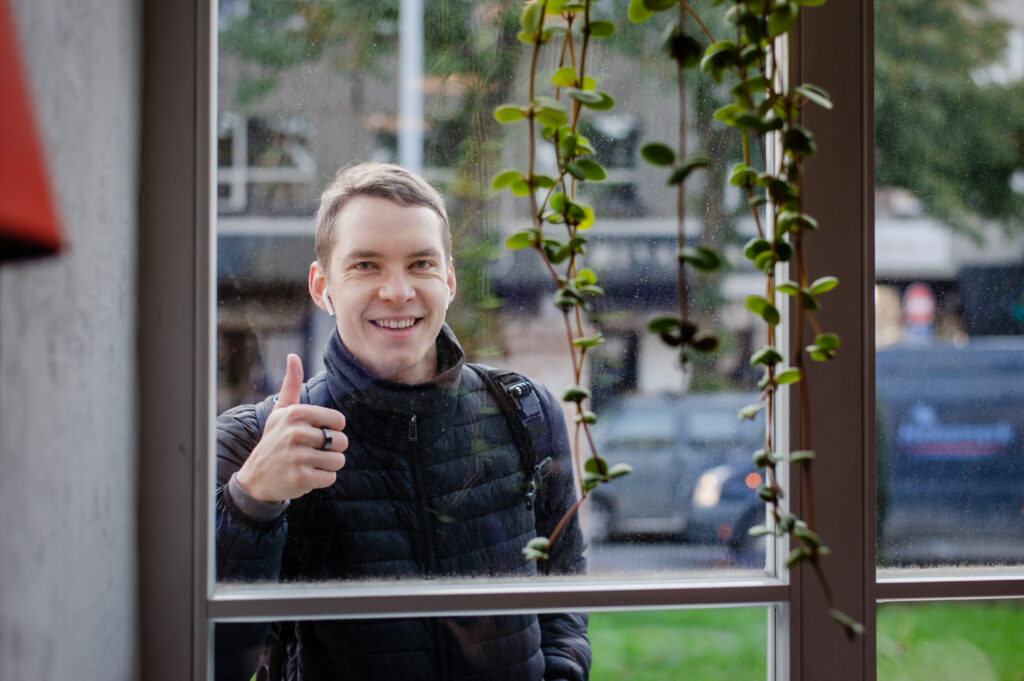
What is the secret sauce of Base Camp hackathon?
The success of Base Camp is strongly tied to our mentors and field experts, ranging from marketing, sales, fundraising, business development, design, product development. All startups were paired with mentors based on their interests and needs – altogether around 90 mentoring sessions were conducted totalling in 68 hours of wisdom shared to startups. This is the secret sauce and a reason why many teams were able to approach potential customers in a better way, adjust their business models, build connections in new markets, and improve their products significantly.
In addition, we delivered two workshops on customer validation and sales, and interviewed 3 experts on productivity, sales, pitching, and fundraising. Rainer Sternfeld from Nordic Ninjas emphasised the importance of the team, especially when investors look into early-stage startups with not a lot of milestones behind them just yet. He added: ‘During investor meetings, investors are testing the mindset of founders. Pitch and pitch deck are key to unlock the door, but the real test is showing your depth.’ As an extra treat, Base Camp startups got an exclusive interview with April Dunford, the author of Obviously Awesome and expert on tech product positioning. Main point? Good product positioning comes from following a process not spitballing ideas.
TOP13 and Winners
The startups were assessed on 4 main criterias: team, traction, business model, and progress during Base Camp. Although we planned to pick out 12 teams, the competition was really strong and we had to let 13 teams to the finals. Similarly, we couldn’t conclude with only 2 runner-ups. So who are the teams who made the most of the hackathon and fought themselves in front of the jury?
Jeff App – WINNERS
Jeff App is a loan broker that helps over 1 billion unbanked people in South-East Asia to access financial services by utilising alternative data
‘Basecamp was an amazing opportunity for us to focus on something that we had discussed as a great addition, but hadn’t managed to get to it. The turnout was amazing, as we not only managed to really isolate our product and development focus, but also get surprisingly rapid involvement by our clients. We had a game-changer idea in our backlog & thanks to the event we realised its true potential and put really solid foundation in place for shipping the product.’
Runner-ups in alphabetic order:
Edumus – Edumus enables schools to engage working professionals in teaching – one grade, one subject at the time, for one school year
We came to Base Camp with a clear plan to develop our platform for our key users – the headmasters – and gain feedback on our strategy to internationalize Edumus. During the event, we were connected with excellent mentors who helped us leap forward in both of these areas. Thus, taking part in Base Camp was a truly empowering experience accelerating the development of our product and opening a lot of doors for future growth.
Edumus also won the AUDIENCE FAVOURITE award!
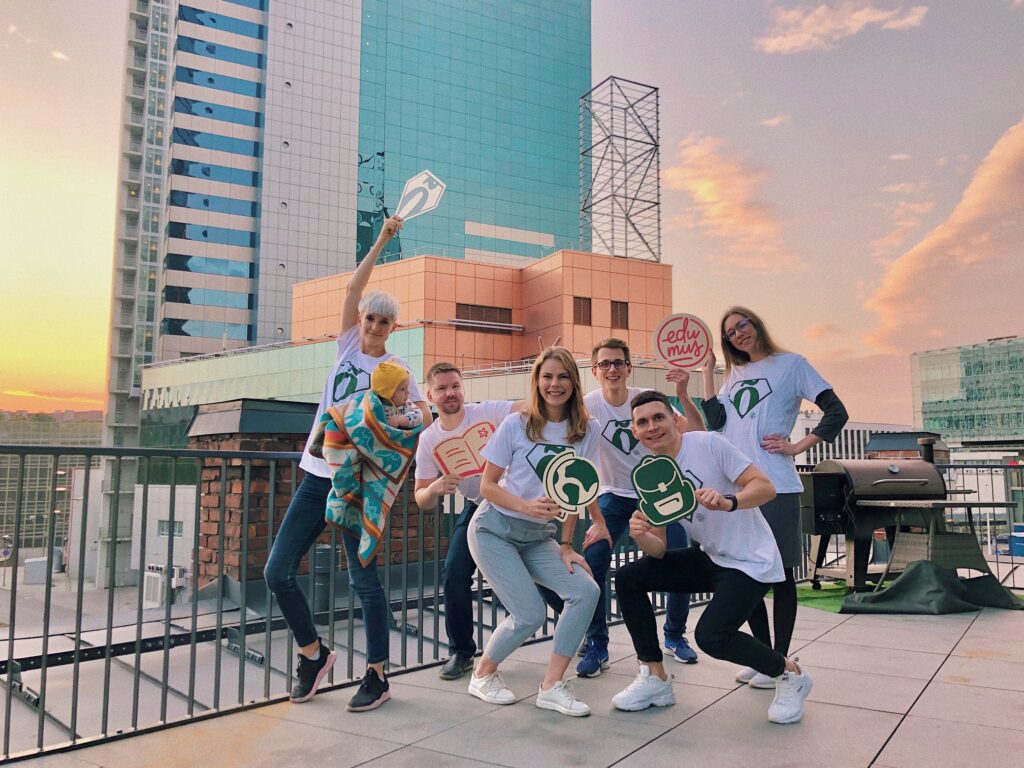
Port 6 – Port 6 is virtualising natural human movement
We had a splendid time during the Base Camp weekend! We learned about some struggles augmented reality developers are facing and we can begin considering these current restrictions in our work. We also really liked the Think Tank format of mentoring, as it forced us to reflect on our assumptions with building the company we want to create.
Relancer – Relancer is a marketplace that helps founders and managers work with professional recruiters who help them grow their teams. Relancer has a special connection with Base Camp. It was their fourth time.
For us, the key has been finding a balance between conviction in our beliefs and mission VS knowing when to let go of something and move on – making small changes all the time. I guess it’s learning by doing and getting punched in the face. As LaMichael James says, “Nobody’s taller than the last man standing.”
The winners and runner-ups were in a tough competition with 9 startups in the finals. All pitches can be found here.
- Checkspot – Discount restaurant menus near you and optimise expenses with restaurant AI
- eTEU – eTEU is a digital platform that enables freight forwarders to save significant time through the automation of document drafting and allows them to securely transfer the trade documents through the blockchain network
- Taut (Homestudy) – Fastest way for teachers to give feedback
- IPOHub – IPOHUB is making SME growth markets transparent and bringing together individual investors to enjoy the benefits of institutional investors
- Lightcode Photonics – Using 3d cameras to change the way how robots see us
- Sharentic – Marketplace for people to share, lend and rent things seamlessly, safely and without much of a hassle
- Syncreality – The first game developer tool to create auto adaptive playfields for home XR
- VideoCV – a modern video recruitment platform
- Werk – Werk solves the biggest pain in European construction – finding qualified temporary workforce
Congratulations also to all other teams (Vyorious Poland, Skillcheckers, Pointship, Skyrocket Your Team, Pagerr, CompAct, KoduLine, Partnerbow, Real Home Network, Fizure, CureAssist, BeeSage, Basaar, Greta Carpool, ArkrisAI, KRATT, Fleetsimplify) who showed impressive progress and commitment! We are so happy that you joined us for the anniversary Base Camp.
Superangel and Garage48 would like to thank all startups that applied, participated and made Base Camp so amazing. We’re happy to welcome back any previous teams and always keen to meet new startups. Stay tuned for Base Camp Spring 20201 and keep following our updates on social media!
All successful billion dollar startups are obvious in hindsight. But how do you know in advance as a founder, how valuable your startup could become? Maybe it is not a billion dollar start-up, but is it a 100 million dollar start-up? We summarized some guidelines for startup founders to answer the startup potential question.
How can startup founders evaluate the true potential of their startup idea?
The Superangel team is reading the early bird applications of startups to our autumn cohort of Alpine House (application deadline 30th August). We are looking for global-minded early-stage software startups, who can truly take advantage of our Alpine House investment package on steroids, leap ahead and secure a Series A round in 12 months. A question about how big these startups can grow is very valid for us. While reading applications we see that some startups have missed some key points in describing their potential.
We looked around and found for founders some great advice in the public space. Kevin Hale and Eric Migicovsky last week at YC Startup School gave a good overview of how they suggest founders evaluate and validate their start-up ideas. As it resonates well with how we in Superangel look at startups, we took a shot and summarized their wisdom. To make your life easier, we even made mind maps out of their speeches (see below). If you want to get full mind maps with Kevin’s and Eric’s answers to questions in the Q&A session, go to the Superangel Facebook page, follow us and shoot us a FB Messenger request to get the pdf of Xmind files.
How to evaluate startup ideas?

The first message of Kevin Hale’s “How to Evaluate Startup Ideas” is that your business idea is a story about why your startup could grow quickly. It should be about growth and not about product features. As a side note, Kevin also gives a hint to founders for filtering great investors out from the ocean of VC funds and angels. All successful startups had a lot of holes in their original business idea. A good investor focuses first on finding ways how a startup founders story can become a billion-dollar company. Poking holes comes later.
As with every good story, your business idea should have specific components:
- Problem: what is the setting allowing you to grow?
- Solution: what is the experiment you are running?
- Insight: what is your unfair advantage increasing the chances that your experiment is going to be successful?
Kevin lists six criteria for a good problem. The more your startup idea has them, the better:
- Popular
- Growing (at least +20%)
- Urgent
- Expensive
- Mandatory (by law)
- Frequent
Frequency is probably the most important criteria as it gives two advantages: people are constantly reminded that they have that problem and you can get frequent feedback is your solution working or not.
Nailing a problem is hard, but nailing unfair advantage is equally hard. Kevin verbalizes five unfair advantages a startup can have:
- Founder: you are one of 10 people in the world capable of solving it or you have strong IP
- Market: at least +20% growth
- Product: 10x better than alternatives
- Customer Acquisition: zero cost to acquire the next customer
- Monopoly: you are the winner taking it all
Founder and Market advantage are the trickiest out of this list.
Although Kevin claims that 99% of startups coming to YC do not have founder advantage even YC has invested into startups purely based on the founding team, who did not have founder advantages. The most famous of such investments was Airbnb, who did not have a product YC believed in nor strong founder advantage in the form of a unique capability or IP. But they had grit, resourcefulness, and some traction, which outweighed the holes in their original business idea.
At Superangel we are looking for founder team advantage in the form of the 3Hs and honey badger attitude. Rei Inamoto coined the 3H description of a dream team: hipster, hustler and hacker. Great teams have these domains covered by different people. In Superangel we also evaluate if founders are like honey badgers, who can survive anything (like snake bites) and are willing to go against much larger predators (like lions) to get their food. That said, if your only advantage is your claim that you are a honey badger, you are probably not investment ready.
Same goes with market advantage. A great market is crucial. Taking from an interview with Andy Rachleff a lousy team on growing markets wins over a great team on lousy markets, and remarkable things happen only with great teams on great markets. That said, having only a market advantage is a weak starting point as it is not sustainable in the long term, and if it remains the only advantage, competition will kick you out from the market soon enough.
How can user interviews increase the value of your startup?

No matter with which story or set of advantages you start with, there is no way around talking to users if you want to grow. Eric Migicovsky puts it nicely in his “How to Talk to Users” speech: the best companies are the ones where founders maintain a direct connection with their users. Talking to users is the only way to know – for a fact – if you are building a billion-dollar company or not.
Like Eric, we also suggest startup founders read Rob Fitzpatrick’s “Mom’s test” for getting a grip on how to get valuable information out of customers.
The most important lesson to learn is about the goal of customer interviews. The goal of customer interviews is to extract data to improve your product, marketing or positioning. Although all good sales reps use a very similar process, user interviews are not about selling. Period.
During a good customer interview, you do not talk about your current idea, do not talk about your ideas on hypothetical future product features, and spend most of your time listening to your customer.
The questions you should ask vary depending on the stage your startup is in.
In the Idea Stage you should ask questions to identify the urgency of the exact problem and your current competition:
1.What is the hardest part about the thing you’re trying to solve? Purpose: verbalizing the goal and general problem.
2. Tell me about the last time you encountered this problem? Purpose: determine the frequency of the problem.
3. Why was this hard? Purpose: identify the exact problem, get data for marketing on wording the problem and explaining the value to new customers.
4. What if anything have you done to try to solve this problem? Purpose: determine the urgency of the problem and with whom your customers are going to compare you to.
5. What do you love about the solution you have already tried? Purpose: getting data on the key features required by customers.
In the Prototype Stage you should ask numeric questions in order to identify your ideal client for whom the problem is severely painful, happens frequently and has a budget and authority to fix it:
- How much does this problem cost them? Purpose: determine urgency and monetary value of lost revenue or money wasted on partial solutions.
- How frequent is the problem? Purpose: determine the frequency (once a day, a month, a year).
- How large is their budget? Purpose: to determine if they have the authority and budget to fix the problem.
In the Launch Stage you should ask questions to identify the product-market fit. One of the most famous blog posts about product-market fit comes from Marc Andreesen, where he claims that product-market fit is the only thing that matters and you have it when customers are pulling the product off the shelves. Tren Griffin has added more angles to product-market fit in his “12 Things about Product-Market fit”. Although both are highly recommended reads, they are retrospective and give lagging definitions on product-market fit. For a founder, it is very disappointing as before a launch you cannot measure nor improve your level of product-market fit.
This frustration led Rahul Vohra, CEO of Superhuman, to develop a process for measuring and improving your product-market fit BEFORE launch. You can read about his process and journey in a blog post “How Superhuman Built an Engine to Find Product/Market Fit”. Superhuman uses four questions for validating product-market fit:
- How would you feel if you could no longer use our product? A) Very disappointed; B) Somewhat disappointed; C) Not disappointed. Purpose: you have product-market fit if at least 40% of users answer “Very disappointed”. Filter out and ignore feedback given by “Not disappointed” users.
- What type of people do you think would most benefit from our product? Purpose: what words used for describing users resonate the most with happy users?
- What is the main benefit you receive from our product? Purpose: do a word cloud from answers from “Very disappointed” users to find out why people love the product (identify one main feature, speed in the case of Superhuman).
- How can we improve Superhuman for you? Purpose: do a word cloud from answers from “Somewhat disappointed”, who shared the same main feature with “Very disappointed” (speed in the case of Superhuman). This gives you the answer to a question what holds people back from loving the product and being “very disappointed”.
The startup Superhuman uses data from these four questions to determine how to divide the time of their product development team. Half of the time goes into developing further the main features “very disappointed” people love and the rest is spent on developing the main features holding back “somewhat disappointed” customers.
Preparing for user interviews
You know the purpose of a customer interview, you have the right questions. Now what? Here are some preparation tips:
- Prepare your tools for gathering data. If you are lousy at interviewing and taking notes simultaneously either get permission from customers to record the interview or ask a co-founder or a friend to come and take notes for you.
- Aim for 10–15 minutes interviews. You can get the most important data out from customers and show that you value their time.
- Start with 3 interviews and become comfortable with the format. If you have never done customer interviews before, take it casually. You do not have to start with a 7-day plan for 100 interview slots. Start with 3 interviews, reflect on how did it go and decide then on your next steps and interviews.
- Drop by in person. Sometimes it is difficult to get appointments arranged over e-mail or phone. Choose the least busy time for your customers and drop by in person at their workplace, conference booth or during their lunch break in a restaurant. If your product is any good at solving customer problems you are doing them a favour by asking 15 minutes of their time to solve their problems forever.
Startup founders in the idea phase often ask, where do I find my first potential customer for an interview? If you had the problem yourself, start with interviewing yourself. This is a great way of testing how you might need to modify questions so that they are more natural and easier to answer.
If it is not your personal problem, but you have seen it happen, go talk to a friend who has this problem.
As suggested above, drop by to places where customers are (firefighters in fire stations, etc).
If you do not have that problem and nobody in your close network has that problem, then you have a major problem. Solving problems for (imaginary) customers to whom you have no direct contact is impossible. Find yourself a co-founder, who is a customer or who has access to customers.
In the Q&A session Kevin and Eric were asked the following questions:
- Is there any difference in doing an in-person interview or online survey?
- What to do if your user is different from your buyer?
- How to find a specific subset of users you want to talk to?
- You have MVP, have done a user interview. When do you do a sales pitch to the person you interviewed?
- Questions to Kevin Hale. Why did you write in a Startup School AMA chat that “A beta label on a product is an ultimate artificial constraint.”?
- How many interviews should you do before starting to build a product?
- When do you charge?
- How to use an open-source model, where I do not charge in the beginning?
- My MVP actually takes a lot of time to build. How to get feedback from customers and users? Should you build paper prototypes?
- It is harder to get consumer products out there as Instagram, Facebook etc. are getting much more expensive. How to do it cheaply?
Watch the video to get their answers or go to Superangel’s Facebook page, follow us and shoot us a FB Messenger request to get the pdf or Xmind files with answers to these 10 questions.
If you are a software startup founder, who feels that you would benefit from strong hands-on support and from our investment package on steroids, then apply to Superangel’s Alpine House.
As a startup founder raising money you finally have a chance to introduce yourself during a conference coffee break to a VC you are after. She asked you to send her a pitch deck. You have tried to cram everything on to 10 slides, as suggested by guru Guy Kawasaki. You send your deck to the VC and…they say they couldn’t follow it, so they lost interest. What gives?
Within the last 5–10 years, the way VCs (and all of us) consume (and especially discover) information has moved from desktop-first to mobile-first. If your deck looks anything like the one below, and you also ignored Kawasaki’s guidelines, then getting people engaged is an uphill battle:
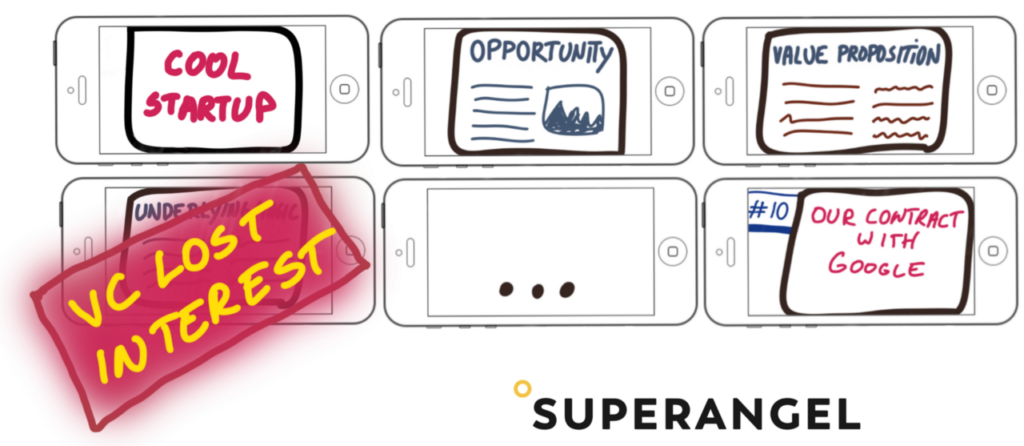
During the Alpine House accelerator we did a special session in order to update start-up founders knowledge and discuss what the new rules of pitch decks for VCs are.
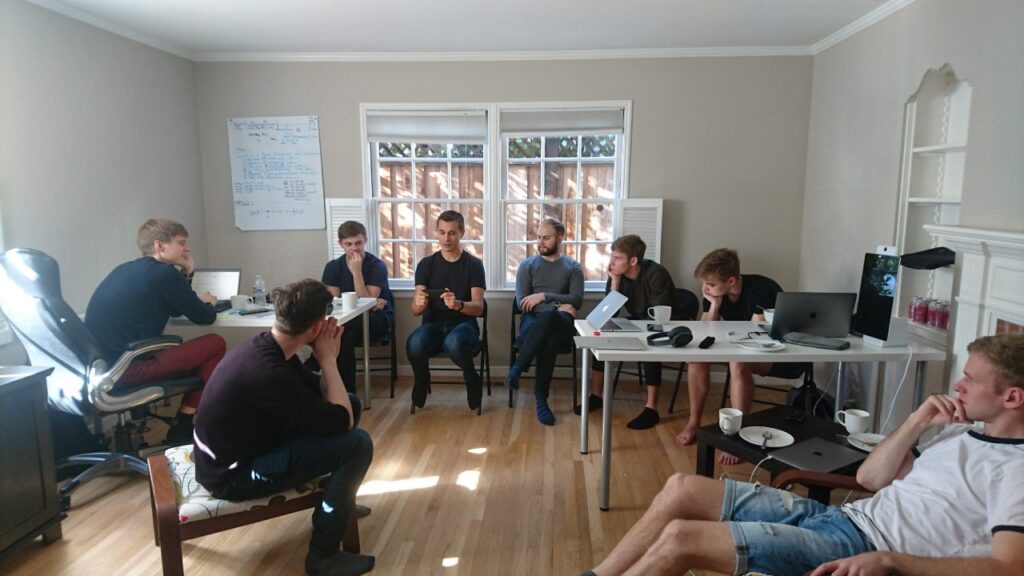
If possible don’t send your slides in advance before a meeting, and try to set up a face to face meeting first.
Most likely you still have to send your slidedeck in advance from time to time. Here are 5 tips from Superangel to founders for creating engaging (and mobile-friendly) slide decks:
#1. Don’t waste your prime real estate for general keywords.
Assume the role of a VC swiping through your slides. The first things you see is the headline — if that’s the only thing they remember, what is the message you’d like them to remember? “Opportunity”, “Value proposition”, “Market Size” just take up very valuable real estate and if the rest is a two-paragraph text then most probably they will decide to read your slides sometime later from a laptop, which most likely means…never.
# 2. Slide titles should tell a story.
Your slide titles should be simple to understand statements explaining what is the core problem, what is your solution, and why the opportunity is NOW. This way you can build interest and make sure your message gets delivered, regardless if it’s on mobile or desktop.
Do a test: write out the titles of your slides and read them as a story. Is it a meaningful and a catchy story raising their interest in meeting you? If not, you have work to do. If you do it right, you can significantly simplify the content of your slides by reducing the noise in each slide, allowing for more than 10 slides. We’ve seen 20–30 slide decks that are engaging, proving that the slide count is just an arbitrary number.
#3. What is your Purple Cow?
Graphics and photos can be very powerful if you use them right. Avoid stock photos if it feels manufactured. Also, avoid images that have nothing to do with your message or your brand, such as a series of mountain range photos for your new accounting SaaS. General brand building and marketing tip: read Seth Godin’s book “Purple Cow”.
#4. Your second slide must be the most memorable.
Although you a have chance to get their attention span for 20–25 slides it will never happen if your second slide is not catchy and memorable. Your first slide can be your start-up’s name and logo or info graphic or catchy sentence. But your second slide must deliver a message that you might be the next unicorn.
#5. Your slides have to work without you.
If you are the only one in your start-up who can present the slides and they make sense only if you present them, you have some work to do. You do not have enough time to be present every time somebody wants to read your slides. Test and ask for feedback to validate how independent your slides actually are. Or ask your fellow founders or team mates to present your slides and see how they understand them.
Of course, as your startup grows and you have more market proof to back up your story, you will need more detailed slides in your next fundraising deck. In that case you have the freedom to include more content in your slides, as people will be putting more money into the company, and following the guidelines presented here will make even more sense.
This is it. Let us know if you have any questions about your deck. Go get them!
Are you an early stage startup founder? Do you want to get faster access to know knowledge provided by Superangel and reach to a next level? Check out our location-independent Alpine House accelerator program.
Superangel tips were summarized by Kalev Kaarna
